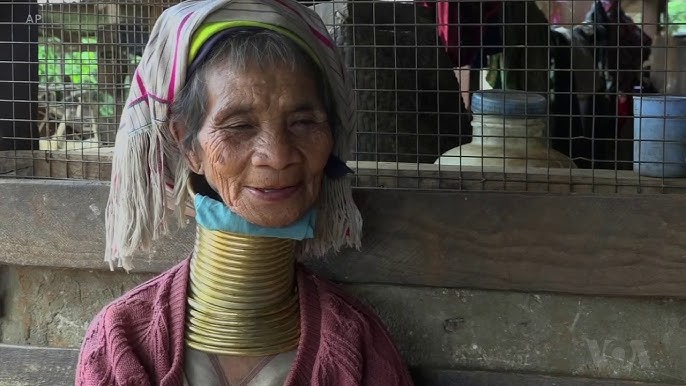Giraffe Woman After Removing Neck Rings: A Journey of Transformation
The term “Giraffe Woman” refers to women from the Kayan Lahwi ethnic group, also known as the Kayin or Kayin people, who are famous for wearing brass neck rings that elongate their necks over time. This tradition, which is part of their cultural identity, involves wearing heavy rings around the neck from a young age, gradually adding more rings to increase the length of the neck. However, there is growing interest in how this Giraffe Woman after removing neck rings fare, whether due to personal choice or health reasons. This article explores the physical, cultural, and emotional transformation these women experience when they decide to remove the rings.
1. The Tradition of Wearing Neck Rings
For centuries, the Kayan Lahwi people, primarily from Myanmar and Thailand, have practiced the tradition of wearing neck rings, which are believed to be a symbol of beauty, femininity, and cultural identity. The rings are worn as a means of elongating the neck, and the practice often starts in childhood, with the first ring being placed around a young girl’s neck at the age of 5 or 6. Over time, more rings are added, and the neck gradually becomes longer. The process is intended to be permanent, and many women continue wearing the rings throughout their lives.
2. The Impact of Removing the Neck Rings
For a woman from the Kayan Lahwi tribe, removing the neck rings is a significant and often emotional decision. The process of elongating the neck is slow, and over time, the bones and muscles in the neck are altered to accommodate the weight of the rings. When the rings are removed, the effects on the neck can be surprising.
Physical Changes
After the neck rings are removed, the neck may appear shorter than it was while the rings were worn, as the muscles and ligaments that had been stretched over the years begin to return to their natural state. However, the bones themselves are usually not able to return to their original length, meaning the neck may still appear somewhat elongated compared to someone who has never worn rings. The skin may also sag or wrinkle after the removal of the rings, as it had been stretched over many years.
Health Effects
In some cases, removing the neck rings can cause physical discomfort. Women who have worn the rings for extended periods may experience muscle stiffness or pain as their body adjusts to the absence of the rings. Additionally, the muscles in the neck may be weak or atrophied due to the prolonged lack of normal use, potentially leading to challenges with mobility and posture.
3. Cultural and Emotional Impact
The decision to remove the neck rings can also carry emotional and cultural significance. For many women, the neck rings are an integral part of their identity and cultural heritage. The removal of the rings can represent a shift in how they see themselves and how they are perceived by others, especially within their community. While some may choose to remove the rings as an act of personal liberation or to seek better health, others may feel a sense of loss, as the rings are a symbol of beauty and tradition.
For those who have lived outside of their community or have moved to urban areas, the removal of the rings might also be a way of blending in with society, where such traditions may be less understood or appreciated.
4. The Role of Modernity and Changing Perspectives
As globalization and modernization continue to influence indigenous cultures, there has been a shift in how traditions like wearing neck rings are perceived. Younger generations of Kayan women may choose to forgo the practice altogether, opting for other ways of expressing their identity. Moreover, some women who have already worn the neck rings for many years may decide to remove them to live more comfortably or to make a statement about personal freedom and the changing norms around beauty.
In recent years, the practice of wearing neck rings has also been brought into the global spotlight, often as part of cultural tourism in Thailand and Myanmar. Some women, particularly those who live in tourist areas, wear the rings to maintain the tradition while also gaining an income from visitors. However, the decision to remove the rings may reflect an increasing desire to reclaim autonomy over one’s body and to define beauty standards on their own terms.
5. Conclusion: A Complex Decision
For the Giraffe Woman removing the neck rings is not just a physical transformation but a deeply personal decision that involves cultural, emotional, and health considerations. The practice of wearing neck rings has been a significant part of the Kayan Lahwi identity for centuries, but as times change, more women are choosing to remove them in order to explore new identities and regain a sense of personal freedom. Whether for health reasons, cultural shifts, or the desire to redefine their own beauty, the journey of the Giraffe Woman after removing the neck rings is one of self-discovery and transformation.






